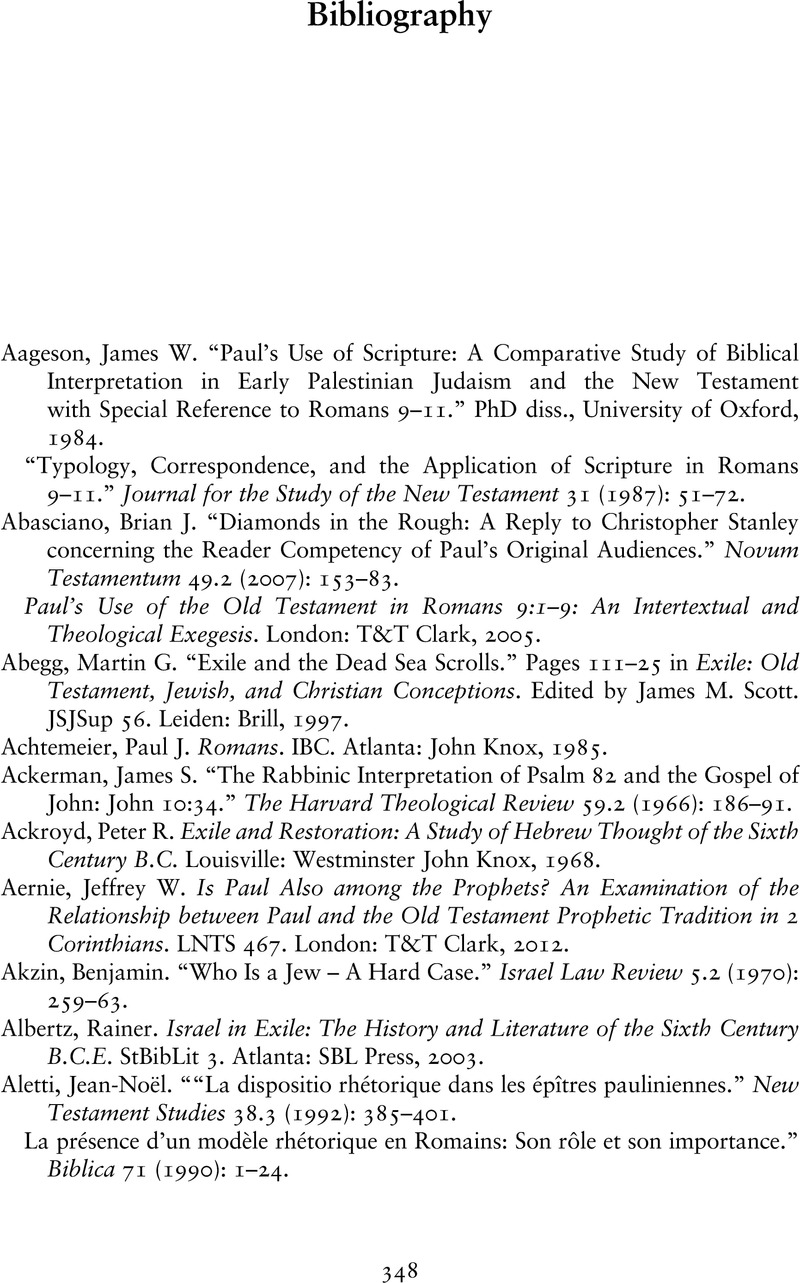Book contents
- Paul and the Resurrection of Israel
- Paul and the Resurrection of Israel
- Copyright page
- Dedication
- Contents
- Figures
- Tables
- Preface
- Acknowledgments
- Introduction
- 1 The God of Jews Only?
- 2 Paul and the Israel Problem
- 3 The Israel Problem and the Gentiles
- 4 Salvation through Justification
- 5 “Not My People”
- 6 God’s Justice and the End of the Torah
- 7 The Mystery of Israel’s Salvation
- 8 The End of the Matter
- Bibliography
- Primary Sources Index
- Author Index
- Subject Index
- References
Bibliography
Published online by Cambridge University Press: 02 November 2023
- Paul and the Resurrection of Israel
- Paul and the Resurrection of Israel
- Copyright page
- Dedication
- Contents
- Figures
- Tables
- Preface
- Acknowledgments
- Introduction
- 1 The God of Jews Only?
- 2 Paul and the Israel Problem
- 3 The Israel Problem and the Gentiles
- 4 Salvation through Justification
- 5 “Not My People”
- 6 God’s Justice and the End of the Torah
- 7 The Mystery of Israel’s Salvation
- 8 The End of the Matter
- Bibliography
- Primary Sources Index
- Author Index
- Subject Index
- References
Summary

- Type
- Chapter
- Information
- Paul and the Resurrection of IsraelJews, Former Gentiles, Israelites, pp. 348 - 402Publisher: Cambridge University PressPrint publication year: 2023



